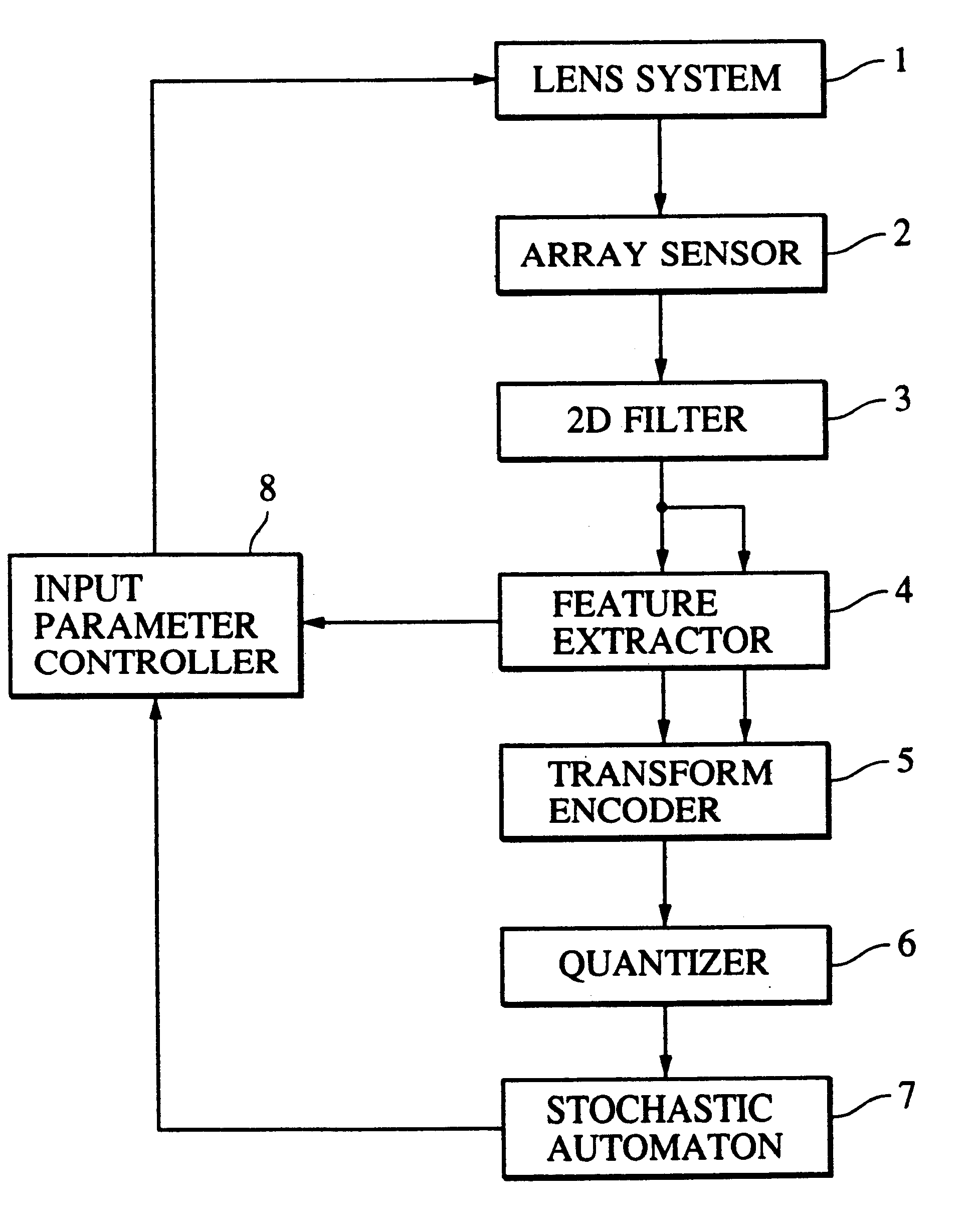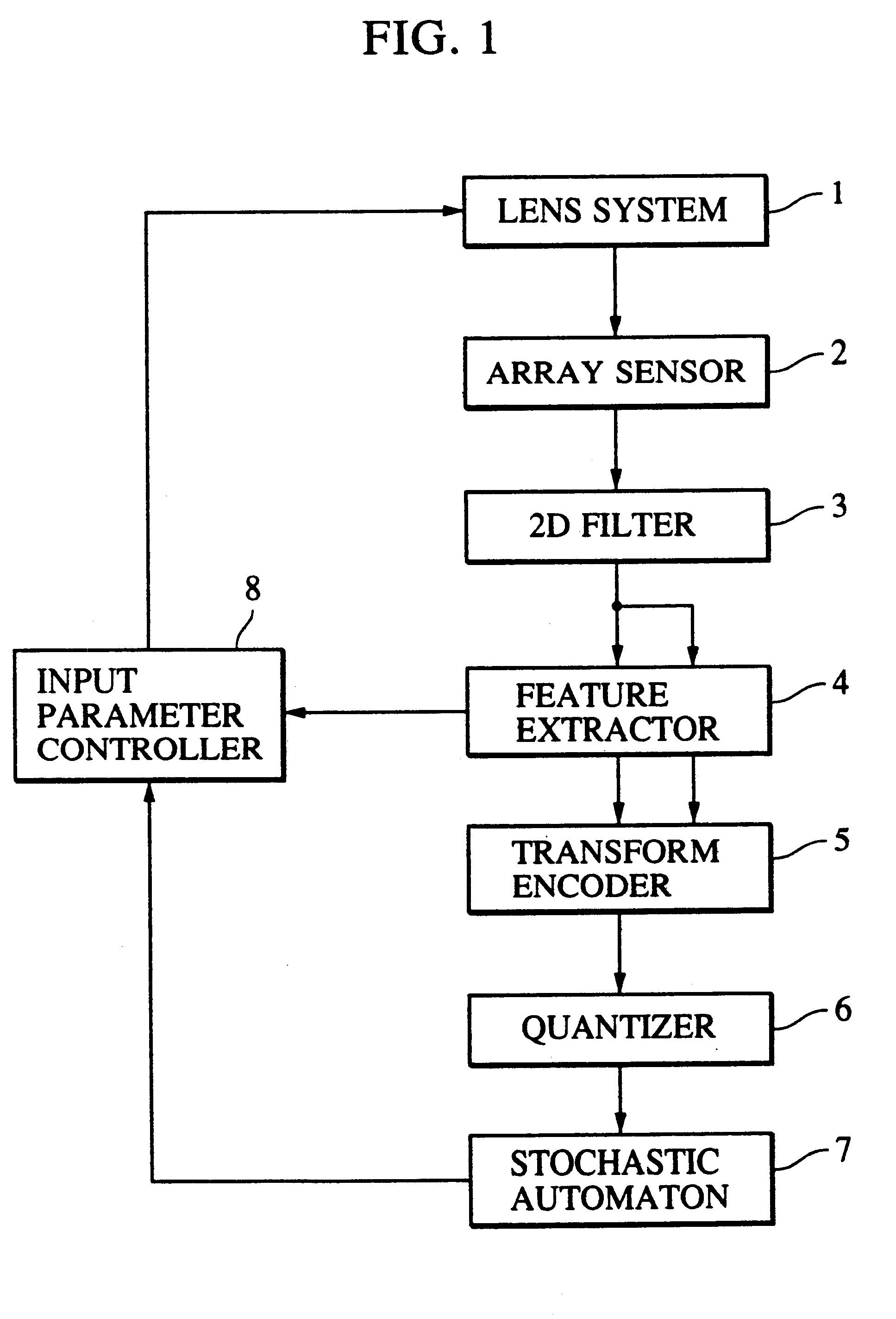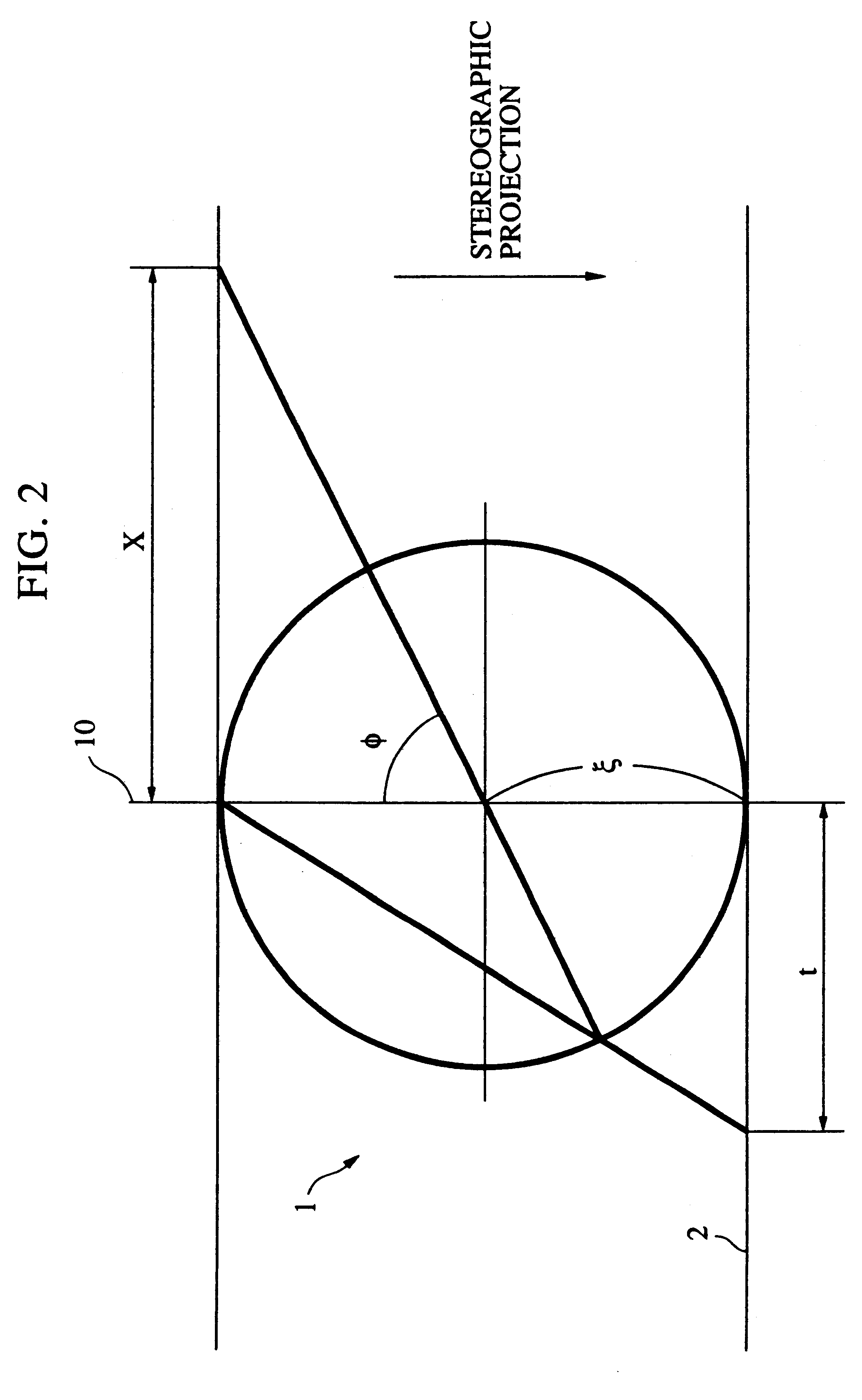Method and apparatus for processing visual information
a visual information and processing method technology, applied in the field of visual information processing methods and apparatuses, can solve the problems of inability to give human knowledge of environments that are not known to humans, inability to estimate the three-dimensional structure from only given information, and inability to give information about the environmen
- Summary
- Abstract
- Description
- Claims
- Application Information
AI Technical Summary
Problems solved by technology
Method used
Image
Examples
second embodiment
A second embodiment has a structure such that the stochastic automaton 7 according to the first embodiment is realized by a Hopfield-type network. As a result, the process to be performed in an input parameter controller 208 is changed.
FIG. 10 is a block diagram showing an example of the structure of a visual-information processing apparatus according to this embodiment. A lens system 201, an array sensor 202, a 2D filter 203, a feature extractor 204 and a transform encoder 205 respectively are same as the lens system 1, the array sensor 2, the 2D filter 3, the feature extractor 4 and the transform encoder 5 according to the first embodiment.
Quantizer 206
FIG. 11 shows the structure of a quantizer 206. The quantizer 206 has a learning mode for acquiring representative vectors and an execution mode for encoding the supplied signal. The representative vectors are acquired in the learning mode by a method using a correlation matrix or a method using a learning vector quantizer suggested...
third embodiment
A third embodiment has a structure in which the visual-information processing apparatus according to the present invention is applied to a monitoring apparatus.
FIG. 13 is a block diagram showing an example of the structure of a monitoring apparatus according to this embodiment. The lens system 301, the array sensor 302 and the 2D filter 303 are similar to the lens system 1, the array sensor 2 and the 2D filter 3 according to the first embodiment.
Feature Extractor 304
A feature extractor 304 detects the extreme value of time change of the image data as well as the feature about the spatial arrangement detected by the 2D filter 303. The monitoring apparatus is positioned in a place, such as a shop or an office, in which a moving object is not substantially exist in usual. If no accident takes place, image data is not changed. Therefore, a place, the image data of which has been changed, is required to be observed in detail. As a result, the time monitored information is able to record ...
fourth embodiment
In the fourth embodiment, the quantizer 6 according to the first embodiment is realized by a learning local vector quantizer and the stochastic automaton 7 is realized by a symmetry-connected-type neural network group. Moreover, there are provided a signal input portion for inputting a signal from outside and a signal output portion for transmitting a signal to the outside are provided. As a result, a process to be performed by the input parameter controller is changed.
FIG. 15 is a block diagram showing an example of the structure of a visual-information processing apparatus according to this embodiment. An image input unit 401 comprises a lens system and an array sensor similar to the lens system 1 and the array sensor 2 according to the first embodiment. A 2D filter 403, a feature extractor 404 and a transform encoder 405 are similar to the 2D filter 3, the feature extractor 4 and the transform encoder 5 according to the first embodiment.
Quantizer 406
FIG. 16 shows the structure of...
PUM
 Login to View More
Login to View More Abstract
Description
Claims
Application Information
 Login to View More
Login to View More - R&D
- Intellectual Property
- Life Sciences
- Materials
- Tech Scout
- Unparalleled Data Quality
- Higher Quality Content
- 60% Fewer Hallucinations
Browse by: Latest US Patents, China's latest patents, Technical Efficacy Thesaurus, Application Domain, Technology Topic, Popular Technical Reports.
© 2025 PatSnap. All rights reserved.Legal|Privacy policy|Modern Slavery Act Transparency Statement|Sitemap|About US| Contact US: help@patsnap.com



